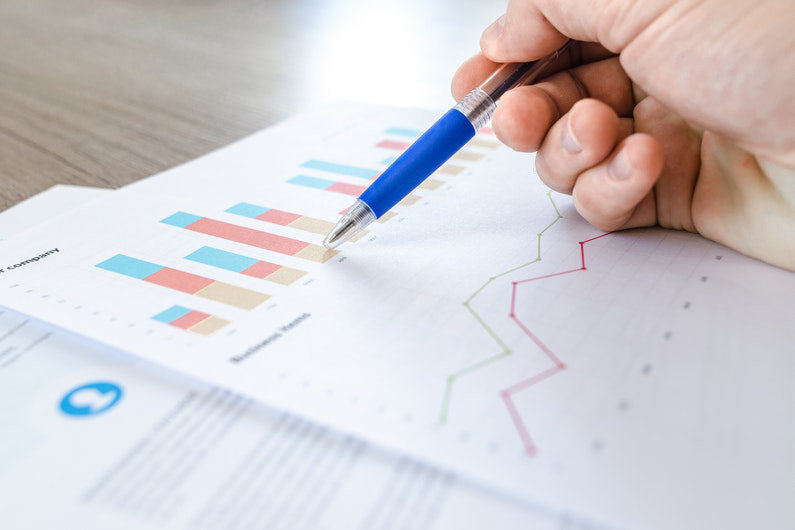Statistics and data science are transforming the world not just in business, but in artificial intelligence, healthcare research, politics, and even sports. Companies which are recognizing the value of data science to identify and analyze their business’ performance can access the information they need to understand where they’ve been, where they are and where they should be headed. In short, a solid understanding of data science and statistical analysis is crucial to businesses in any industry. If you’re not using it, you should be investing time and money into learning more about it as it has the potential to change the way we conduct business for the better.

Here are the most significant benefits of using statistics and data to improve your business.
6 Benefits of Using Statistics and Data in Business
1. Improved Efficiency
By collecting and analyzing internal data about your processes and employees, you can identify areas of your business which could be operating more efficiently and potentially lower some of your outgoings and increase productivity.
2. Deeper Market Understanding
Through statistical analysis and data mining you can track trends in your industry and anticipate shifts in the market or seasonal cycles. This enables you to invest in the right products and marketing campaigns and reduce wasted resources.
3. Reduced Costs
You can use the data to find the products or marketing activities which are not returning as much profit as others. With this information, you can then either lower your production of this product or find more cost-effective ways to manufacture.
4. Better and Faster Decision-Making
With efficient and accurate methods of analyzing and interpreting your business’ data, you can make faster decisions which are business critical. You can also examine the impact of your decisions by tracking the data once the change has been made. Data analysis is also an effective way to keep a close eye on potential fraud or unusual activities.
5. Delivering New Products/Services
Your data will show you which products and services are successful and where you should be investing more time and money. The information can also help you identify the best time of year to launch a new product.
6. Personalized Customer Service
Marketing and sales teams can use data and statistics to understand customers at a very intricate level so they can personalize the sales and customer service process to their needs and preferences. They may even be able to gain crucial insights from customer surveys which enable them to market specific products to specific customers.

The Importance of Statistics in Business
Statistical analysis and data involve the examination and interpretation of raw figures and facts in order to draw conclusions. In business, these conclusions can lead to better decisions, actions, and strategies to facilitate more profits and significant growth. It is sometimes referred to as “cause and effect analysis” and can be applied to sales, marketing, finance, and operations. You may also come across the term “Big Data” which is the generation and storage of a large amount of data which businesses generate every day in different formats and often at rapid speed.
Businesses have been capturing, storing and analyzing data for years. In recent years data science software and technology which automates this function has become more widespread enabling firms to make strategic decisions on a shorter timescale. However, if you or someone in your business doesn’t have expertise in statistical analysis and interpretation, automated systems can miss opportunities and nuances in the data. Software cannot recommend actions for your business, and this is why some business owners choose to employ Data Scientists.

What Does a Data Scientist Do?
There are 6 six significant steps to follow when dealing with statistics and data in your business:
- Technology tracks and collects the data which is crucial to the company.
- The data should be stored and backed up securely. Cloud storage services hold the data virtually rather than physically.
- Remove irrelevant detail from your data, so the critical information is easily accessible.
- Analyze the data to find the value.
- Transfer the data into an easily understandable format for others in the business to understand.
- Business decisions should be supported by findings from the data and not educated guesswork.
A Data Scientist has specialist knowledge in statistics, math and computer science as well as data visualization, data mining and information management. Many will also have experience in infrastructure design, cloud computing, and data warehousing. Investing in a Master’s degree in Applied statistics for Data Scientists means they can access flexible learning to deepen their knowledge and add real value to your business. A Master of Science in Applied Statistics gives you or your employee the skills needed to analyze and interpret data via a broad range of statistical methods. These skills can be used to make predictions, devise experiments and draw accurate conclusions which you can turn into action.
In addition to the statistical methods and technical knowledge of software programming included in the course, they’ll also receive training in problem solving, communication and leadership. Key findings from data and statistics should be presented to stakeholders or other relevant people in the business who need to understand the results. It may be in a visual format or in simple language, but it is another skill a competent data scientist needs to be comfortable with.

In Conclusion
Almost any business can be improved with statistical analysis. By collecting, storing, analyzing and acting on lessons learned from statistics to improve their operation, businesses can find out more about how products are performing, what customers want and how to make better decisions in less time. You don’t necessarily need to employ a dedicated data scientist as the knowledge and skills can be spread across your team, but it could be a very good idea to invest in training or education for yourself or others in this area. The crucial element here is that you recognize the importance of understanding statistics in order to enable real growth.




